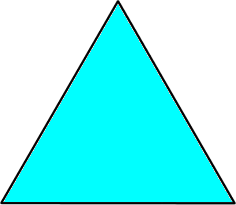Nemesis
But why should comets become more likely to hit us every million years? Here we launch ourselves into deep speculation. It has been suggested that the sun has a sister star, and the two orbit each other with a periodicity of about 26 million years. This hypothetical binary partner, which has never been seen but which has nevertheless been given the dramatic name Nemesis, passes, once per orbital rotation, through the so-called Oort Cloud, the belt of perhaps a trillion comets which orbits the sun beyond the planets. If there was a Nemesis that passed close to, or through, the Oort Cloud, it is plausible that it would disturb the comets, and this might increase the likelihood of one of them hitting earth. If this all happened - and the chain of reasoning is admittedly tenuous - it could account for the 26-million-year periodicity of mass extinctions that some people think the fossil record shows. It is a pleasing thought that mathematical unweaving of the noisy spectrum of animal extinctions might be the only means we have of detecting an otherwise unknown star.
Notes:
Folksonomies: astronomy nemesis
Taxonomies:
/science (0.576036)
/science/geology/volcanology/volcanic eruptions (0.471452)
/finance/personal finance/insurance/health insurance (0.447277)
Keywords:
Oort Cloud (0.978321 (negative:-0.504318)), so-called Oort Cloud (0.946808 (negative:-0.504318)), hypothetical binary partner (0.898943 (negative:-0.535528)), fossil record shows (0.801358 (neutral:0.000000)), dramatic name Nemesis (0.735166 (neutral:0.000000)), deep speculation (0.701844 (neutral:0.000000)), 26-million-year periodicity (0.697126 (neutral:0.000000)), animal extinctions (0.685874 (negative:-0.410227)), orbital rotation (0.674571 (neutral:0.000000)), mathematical unweaving (0.653577 (neutral:0.000000)), comets (0.649347 (negative:-0.588794)), sister star (0.645687 (neutral:0.000000)), noisy spectrum (0.642440 (neutral:0.000000)), unknown star (0.627305 (negative:-0.436518)), sun (0.489372 (neutral:0.000000)), orbits (0.465147 (negative:-0.391663)), likelihood (0.464815 (negative:-0.537113)), planets (0.453611 (neutral:0.000000)), reasoning (0.451919 (negative:-0.572795)), belt (0.448414 (negative:-0.391662)), means (0.444816 (negative:-0.410227)), earth. (0.441529 (negative:-0.491007)), chain (0.441337 (negative:-0.572795))
Entities:
Oort Cloud:GeographicFeature (0.845526 (negative:-0.504318)), partner:JobTitle (0.310821 (negative:-0.535528)), 26 million years:Quantity (0.310821 (neutral:0.000000)), million years:Quantity (0.310821 (neutral:0.000000)), million-year:Quantity (0.310821 (neutral:0.000000))
Concepts:
Planet (0.983426): dbpedia | freebase | opencyc
Star (0.902686): dbpedia | freebase | opencyc
Solar System (0.802162): dbpedia | freebase | opencyc
Earth (0.798031): dbpedia | freebase
Mercury (0.761846): dbpedia | freebase | opencyc | yago
Jupiter (0.755856): dbpedia | freebase | opencyc | yago
Comet (0.728364): dbpedia | freebase | opencyc
Moon (0.721043): dbpedia | freebase
Triples
 Nemesis
Nemesis
Nemesis > Similarity > NemisisThe idea that a periodic close encounter of our solar system with a star shakes comets loose in the Oort Cloud and causes mass extinctions.




